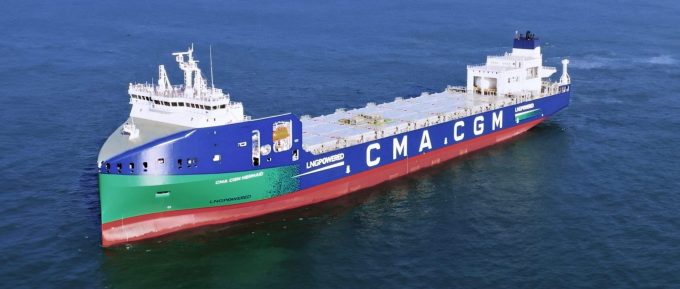Liners add capacity to Asia-ECSA as ocean rates hit 18-month high
With Asia-South America ocean freight rates at an 18-month high of around $4,350 per 40ft, ...

CMA CGM has taken delivery of the first in a series of 2,000 teu feeder vessels, in what appears an aggressive play for trucking cargo and drive modal shift from road to sea.
The LNG-fuelled CMA CGM Mermaid illustrates a departure in recent design, moving toward larger vessels.
The fore-mounted bridge, common to many of the newest containerships, despite present understanding of naval architecture being against them, allows the vessel better aerodynamics, as well as a higher loading capacity. CMA CGM also expects its bow shape to save some 15% of fuel.
Xeneta chief analyst Peter Sand told The Loadstar recently that even though short-range feeders could not run as fuel-efficiently as mainhaul containerships, thanks to their higher speed, the hub-and-spoke model holistically beats them, thanks to the efficiencies of capacity-matching, as well as their ability to call at smaller ports, closer to the destination of the cargo,
“Using feeder ships on the intra-regional trades is more efficient than the largest ships calling a range of different ports with less and less cargo as it makes its way through a region,” he said. “The better carriers can match ships deployed to the actual cargo demand, highlighting the benefits of feeders.”
And they are a considerable improvement over trucks; a 2,000 teu feeder emits approximately ten times less CO2 per-tonne-mile than the equivalent 2,000 trucks, and contributes nothing to traffic congestion.
CMA CGM said the last vessel in the 10-ship series, due for delivery next year, will feature a hydrogen 1MW fuel cell, enabling it to run with zero-emissions at the quayside.
Comment on this article